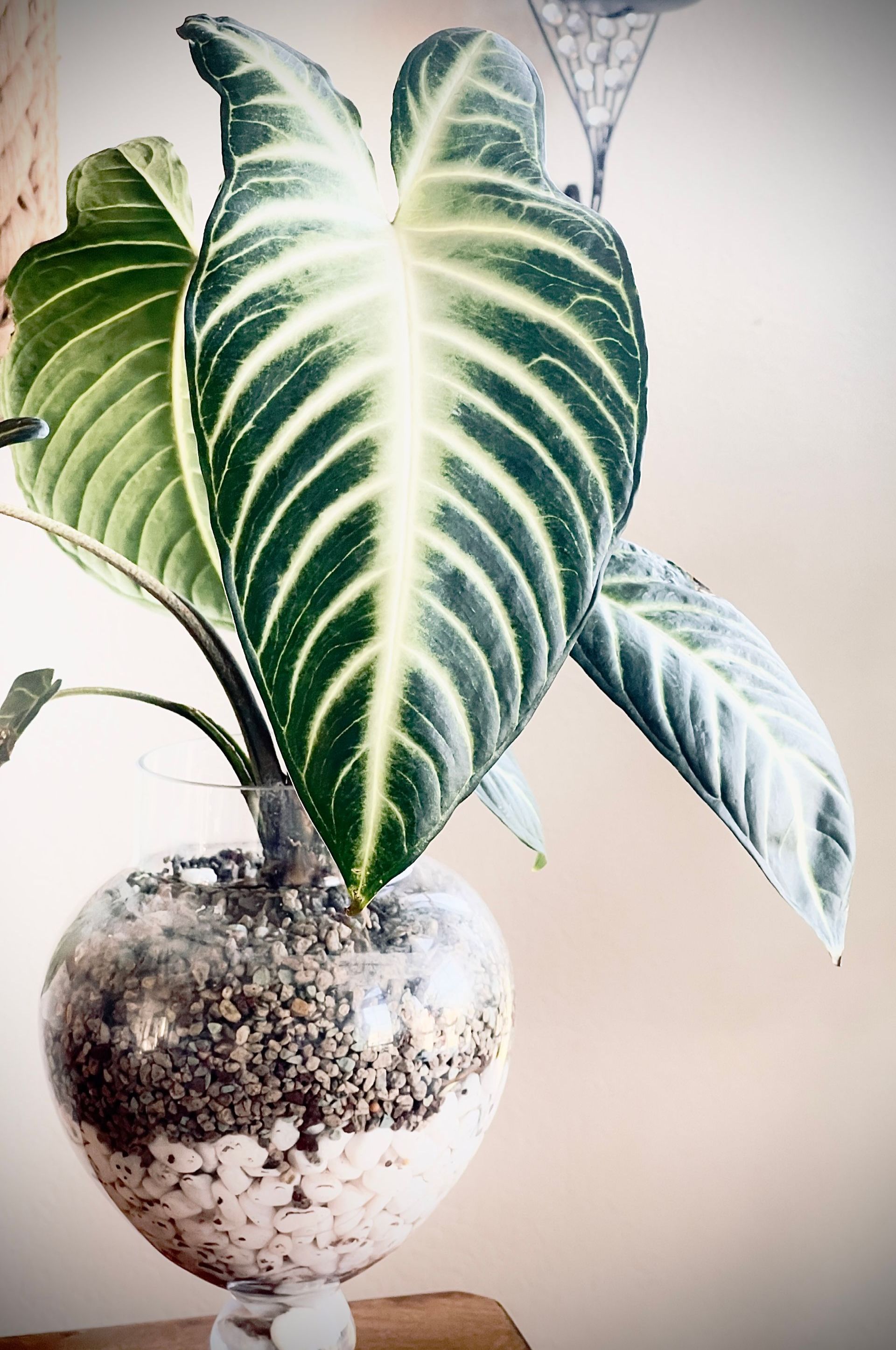Understanding Semi or Passive Hydroponics
What is Semi or Passive Hydro?

If you're anything like me, you might associate the word Hydroponic with a complicated, and somewhat space hogging setup that is often not the most esthetically pleasing. However, semi or passive hydroponics are actually pretty straight forward and offer a multitude of creative and stunning display options to say the least.
Semi hydro is a method of growing plants in a soilless substrate. Some of the more common substrates used include Pon, Leca and or Pumice. Essentially, a fancy way of saying rocks! If this concept is new to you, it may sound a little complicated or intimidating at first, however, I promise it isn't. Once you understand a few basic concepts, it's really quite simple and offers many benefits to you and your plants.
Here at Soilless Living LLC, we predominantly use Pon as our substrate of choice, therefore, in this post we will focus mainly on understanding some Pon basics.
What is Pon?
It is a mineral based, non-organic, growing medium that is comprised of Zeolite, washed Pumice and Lava rocks and has a 45% water to 55% air ratio. Unlike soil, Pon does not compact over time and maintains its ideal water to air ratio that plants need to thrive. Additionally, it provides a water PH buffer which prevents large swings in PH levels from happening over time in your water reservoir.
Basic Fertilizing Needs
Because non-organic matter such as rocks does not decompose, it will not provide your plants with the nutrients they need to grow and thrive. Certain Pon suppliers will include a slow-release fertilizer in their mix that will last for a specified duration of time, however, supplementing nutrients for your plants in semi hydro is vital. Based on our experience, we find that synthetic (non-organic) fertilizers are best for semi hydro plants.
How to Water
A water reservoir is maintained by filling up 1/4 of your vessel. This eliminates the guess work, compared to soil, around when and how much water you need to provide your plants. The Pon wicks up the water which is readily available to the plant to absorb whenever its thirsty.
Plants that have been acclimated to living in a semi hydro setup have established what is known as water roots. So, their root system is different from plants that have been living in soil. They can handle living in semi hydro and actually thrive and live a much happier life because of it. So long as you follow the few basic steps.
Here, at Soilless Living LLC, we take care of that acclimation process for you! The plants we sell already have water roots and have been accustomed to living in Pon before they are available for sale. We do our best to ensure your new Pon plants have the highest success rate before you take them home!
Flushing
Overtime, mineral and salt build up will accumulate on your substrate which results in what is known as nutrient lock out. This can restrict the plant's ability to absorb the fertilizer. To prevent this from happening, plants need to be flushed out with water under a faucet or in the shower every 2-3 weeks.
What Type of Vessels / Pots can be Use with Pon
There are several options to choose from here with a few things to consider when deciding what vessels will work best for you.
Option 1 (Drainage method): Plastic pots with small drainage holes such as Orchid pots or Net pots can be used to pot up your Pon plants and then placed in a second no drainage vessel or pot of your choice to hold the water reservoir.
Option 2 (Self-watering pots): The only difference here, compared to the first option, is that you can purchase self-watering pots that already have a fitted insert and include water level indicators that can be very beneficial. They let you know when the water reservoir needs to be topped up without having to pull out the insert to check.
Option 3 (Wicking pots): Another form of self-watering pots. The planter insert will have a wick running through to the water reservoir.
Option 4 (No Drainage): One vessel / pot such as glass vases or planters with no drainage holes can be used.
